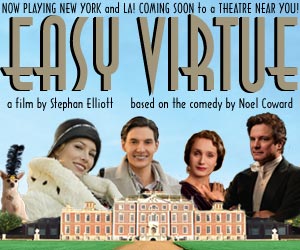
Based on a 1924 Noël Coward play, Easy Virtue, which opens in New York and Los Angeles theaters today, is a comedy about a racecar-driving American beauty (Jessica Biel) and her struggle to adapt to life with the in-laws. Nearly all the action takes place at her new English husband’s (Ben Barnes) ancestral home, where her mother-in-law, Mrs. Whitaker (Kristin Scott Thomas), reigns supreme. Nottinghamshire’s Flintham Hall, originally a Jacobean house that was extensively reworked in the 19th century, served as the main stand-in for the Whitaker estate. I spoke to the film’s location manager, Giles Edleston, for some behind-the-scenes details.
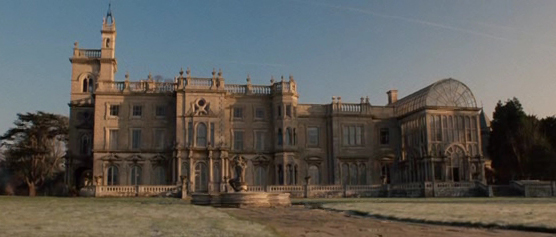
How did you decide on Flintham Hall?
When I read the script, it was the first house that sprung to mind: that sort of faded grandeur, a house that’s past its prime but still deeply loved by the family.
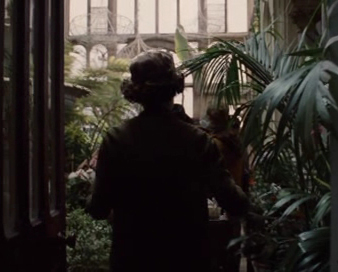
Was there one aspect of the house in particular that seemed just right?
The whole reason I went there was the orangery, or conservatory. It’s a scaled-down version of London’s Crystal Palace, which doesn’t exist anymore. It’s semicircular and perfect in its proportions-so quintessentially English. It’s made of glass and beautiful local stone—which is now rather crumbly—and everything still works. It’s heated, it cools, and it has little fountains in it. It is exactly Mrs. Whitaker.
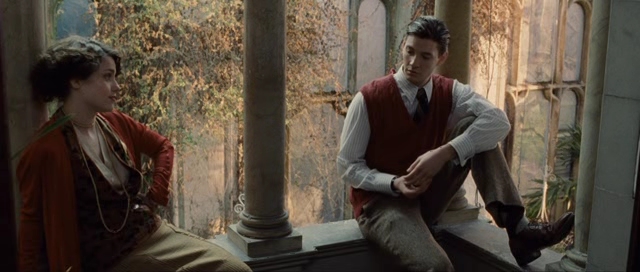
And it really seemed to be of a piece with the house.
I’ve been into a lot of conservatories that are not adjoining the main building, but here you walk through the drawing room and straight in. There’s so much glass; you’re constantly looking into this greenhouse of foliage that’s lush and vibrant 365 days a year. The drawing room is actually double-height, and has a gallery running around it. Up in the gallery is a library, and there’s a little Juliet balcony that overlooks the conservatory. I don’t think there’s another house in England that has that. You walk in and think, ‘I would love to spend a weekend here.’ And when that conservatory’s lit from the inside at night, I mean, that’s really showing off to your neighbors. Not that they have any neighbors.
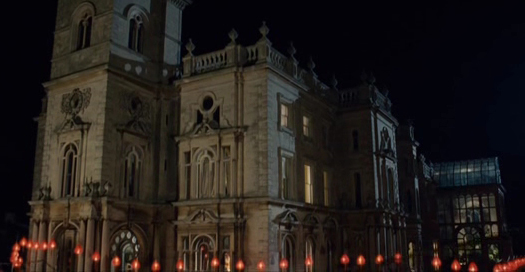
What were the interiors like?
It’s very Victorian inside-slightly unnerving, and it’s full of stuffed animal hunting trophies. We brought in very few props. A fireplace and a mantelpiece and the two chandeliers in the main drawing room, which we left absolutely as-is, are original pieces purchased from the Great Exhibition of 1851. A member of the family bought them and had them reinstated. Flintham Hall is not small, but these pieces are of such a scale and proportion that they almost look out of place—it probably almost bankrupted the family. The figure [a neoclassical sculpture] that’s pushed over at the end of the film is of course a prop, and not courtesy of the household.
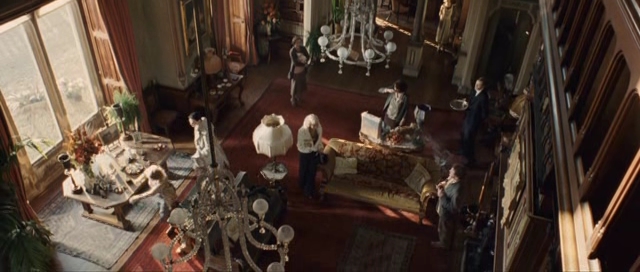
Did you film at any other locations?
There were actually three houses, due to finances. Flintham is up in Nottinghamshire and we were based in London, so it meant taking the crew away for a couple weeks. The hunt scene, that’s actually a National Trust house called Wimpole Hall, in Cambridgeshire. And there’s another house much closer to London—Englefield, in Berkshire—that we spent far longer in. We shot three-quarters of the interiors there, including the billiards room, the dining room, the tennis court, the party, and the gardens. And when [Jessica Biel and Ben Barnes] driving up at the beginning, that’s Englefield.
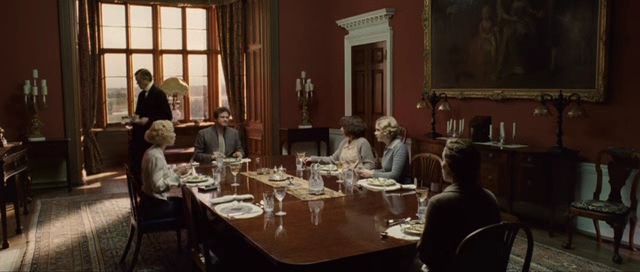
Really? That rip-roaring entrance in the 1929 roadster?
Flintham Hall you actually approach from the back—which, in terms of cinema, is rather dull. So when you see them driving at Flintham, they’re actually driving across the lawn. It is cleverly cut between the two.
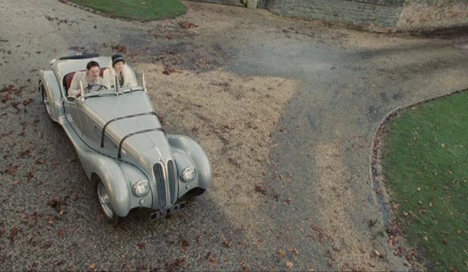
Tell me how you ended up using that particular BMW.
We tried to get various cars. For a while, it was going to be a white Rolls-Royce. But someone said, ‘Have you seen the opening scene of…?’ We found we were looking very similar to another movie. At the end of the day, it’s what was available.
Did the owner come on set to chaperone?
He was there. You look at these beautiful cars, and they’re absolutely spotless on camera. All we wanted to do was throw a bucket of muck over it and dirty it up, because she’s driven up from the south of France. I’ve seen this with other car owners—it is their pride and joy. They allow them to be used for film, but you find them in between takes with their buffer.
